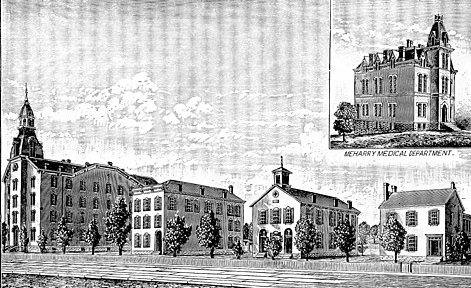On December 6, 1865, the 13th Amendment was ratified by the Congress of the United States, abolishing slavery. This pivotal moment also saw the birth of Walden University, named in honor of John Morgan Walden, the thirty-fifth Bishop of the Methodist Episcopal Church from Lebanon, Ohio, and corresponding secretary of the Western Freedman’s Aid Commission and the Methodist Freedman’s Aid Society.
Walden became one of the first historically Black institutions of higher education organized in the South. Its mission was clear: to educate and train freedmen and especially to teach these men and women to become teachers and ministers. Established in Nashville, Tennessee, by the Methodist Episcopal Church, Walden was located 1.7 miles southeast of downtown.
In 1876, Walden renamed itself Central Tennessee College. Meharry Medical College, the second oldest Black Medical School in the nation, would eventually emerge out of one of the University’s departments. In addition, the University had departments of science, agriculture, and theology. The university administration was housed in Rust Hall on the first floor, while students lived on the second floor.
By 1876, student enrollment stood at 360, with an additional 115 preparatory students attending the affiliated West Tennessee Academy at Mason, Tennessee. By the 1890s, Walden had a varsity football team that played nearby institutions, including Fisk University, Roger Williams University, and Tennessee A&I University.
In 1902, Rust Hall burned down, killing or injuring dozens of students. As a result, all administrative and student life activities were moved to another part of the campus. By 1907, however, the university had rebounded from that tragedy and expanded to include new departments such as Bible Training Law, business, domestic science, industrial arts, and music. The Department of Medicine added dentistry, nursing, and pharmacy. Eight years later, in 1915, that department left Walden to become Meharry Medical School, a separate institution.
By 1918, however, the University began experiencing financial difficulties, which caused it to rethink its educational priorities. As a result, it reduced the number of programs and classes it offered so that it could stay open. That reduction eventually caused it by 1922 to rename itself Walden College and become a two-year institution offering Associate of Arts and Associate of Science degrees. It also relocated to a smaller campus. The financial difficulties continued, however, and by 1925, Walden closed its doors. The 12-acre campus remained vacant for ten years before being purchased by Trevecca Nazarene College, affiliated with the Church of the Nazarene, in 1935.
Walden’s most prominent graduates included Noah Walter Parden, a Chattanooga attorney who became one of the first Black attorneys to argue a case before the U.S. Supreme Court, and Dr. Emma Rochelle Wheeler from Gainesville, Florida, who established the Walden Hospital with her husband, Dr. John N. Wheeler. A prominent member of Alpha Kappa Alpha Sorority, she had previously been one of the first female African American physicians in Chattanooga.
Do you find this information helpful? A small donation would help us keep this available to all. Forego a bottle of soda and donate its cost to us for the information you just learned, and feel good about helping to make it available to everyone.
BlackPast.org is a 501(c)(3) non-profit and our EIN is 26-1625373. Your donation is fully tax-deductible.
“Catalogue of Walden University, 1900-1901,” https://digital.lib.utk.edu/collections/islandora/object/walden%3A523#page/1/mode/2up;
Martha Rudolph, “Catalogues of Walden University, A Historically Black College in Nashville,” https://volumes.lib.utk.edu/features/walden-university/;
“Walden University Nashville, Tennessee 1865-1926,” https://www.lostcolleges.com/walden-university.

